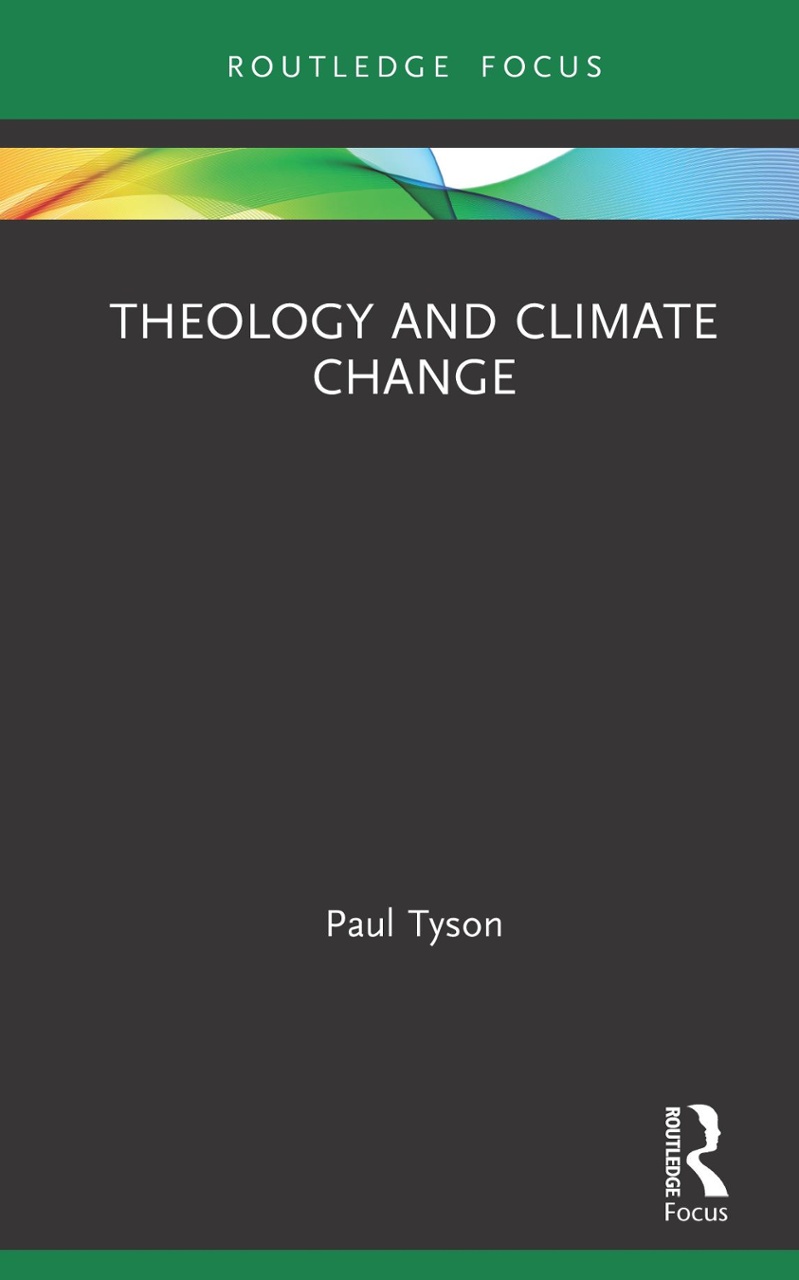Book Review by Neil Ormerod
Theology and Climate Change
By Paul Tyson
London: Routledge, 2021; 140 pages.
ISBN 9780367565367, 1st edition, hardcover.
AUD$42 paperback; AUD$91 hardcover
Any prospective purchaser of this book should be informed at the outset that while the terms theology and climate change appear in the title, the term theology is not used in its usual sense, and they will read little about the scientific aspects of climate change which are taken as given. When Paul Tyson speaks of theology he distinguishes between “theology A” and “theology B.” The first is metaphysics or first philosophy (following Aristotle), while the second relates to a disciplined reflection on religious sources, texts, and traditions, taken as normative for a religious community. His focus is on theology A. When it comes to climate change, Tyson is not concerned (directly) with CO2 emissions, but with the “theology A” assumptions which he finds as the cultural driver of climate issues.
When it comes to giving an analysis of long-term historical issues authors move in one of two directions: the idealist which sees “ideas” or culture as the predominant driver; and the materialist (e.g., Karl Marx) who views it as economics and perhaps technological and political power that drives culture. As Charles Taylor points out in A Secular Age, the truth is often a mix of the two: “The only general rule in history is that there is no general rule identifying one order of motivation as always the driving force.” The present work falls within the idealist camp and identifies what Tyson calls Progressive Dominion Theology (PDT) as the “primary cause of climate change” (p. 71). PDT “values domination, it values instrumental and calculative reason that solves problems, it values nature as a resource” (p. 124). Tyson argues that this “theology” is common among both religious and non-religious persons of various political commitments and largely shapes our modern attitudes to the environment. In this sense Tyson’s work is a longer and perhaps more nuanced exposition of the position of Lynn White: that Western Christianity is the cause of our ecological crisis.
What the reader of this work will get, and is of value, is a course in the history of ideas which led to the development of PDT, notably through various positions (nominalism, atomism, voluntarism), which coalesced to form PDT. There are various types of genealogical accounts of the origins of modernity—from Charles Taylor, John Milbank, or Alasdair MacIntyre to name a few—and Tyson draws on various authors to develop his case. However, this current work remains a largely idealistic account of cultural change, with the technological, economic, and political forces at work only really coming into play in the final chapters. To work out how much the cultural aspects drove the technological, economic, and political, and vice versa, would require a much more fulsome and nuanced account. Still, for a reader unfamiliar with the relevant cultural history, Tyson provides a good education.
When it comes to theology B, Tyson is clearly more at home in evangelical circles. His account of Catholic ecological theology is minimal, largely based on Pope Francis’ encyclical Laudato Si’. It is clear that it is white evangelicals (Evangelicals with a capital E) in the USA that are his primary concern, and he sees weaning of them off certain theology A commitments as central to breaking down their resistance to “green” concerns such as climate change. The alliance between the political and economic conservatism of the Republican Party and Evangelicals needs to be loosened. He presents evidence that it was not always so, that Evangelicals did in fact have a green agenda, but it was stifled by their alliance with the Republican “Grand Old Party” and their economic masters.
I have some concerns with this strategy. It places too much of a focus on America and Christianity. The two most populated nations, India and China, have quite different cultural assumptions and are the key players in any solution to our climate change issues. And more importantly, the rate of cultural change is far too slow to produce change on the timescale we need. The cultural forces Tyson is talking about that formed PDT took centuries to create their impact. Seeking a cultural solution may take a century at least, and that is simply too long. We need solutions measured in a couple of decades: technological developments to shift from fossil fuels; economic tools such as divestment, carbon taxes, renewable incentives; and political pressure to counter the relentless lobbying of the fossil-fuel industry that wants to maintain business as usual, even if it means destroying the planet as habitable for human beings.

